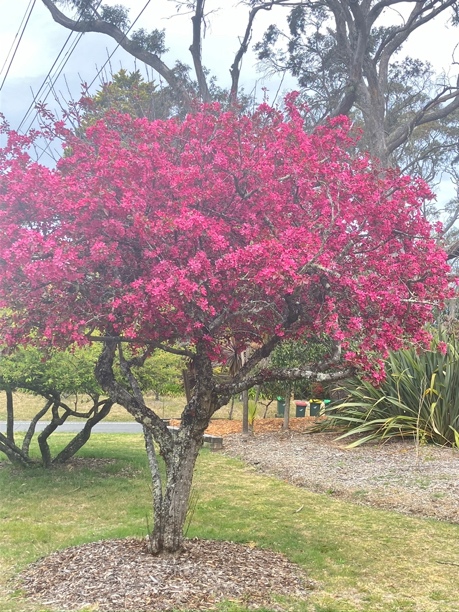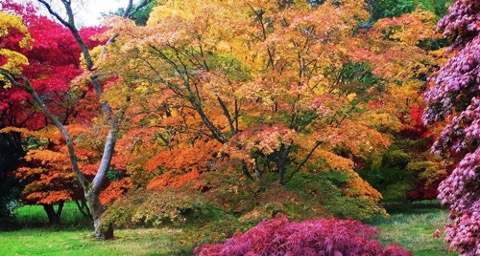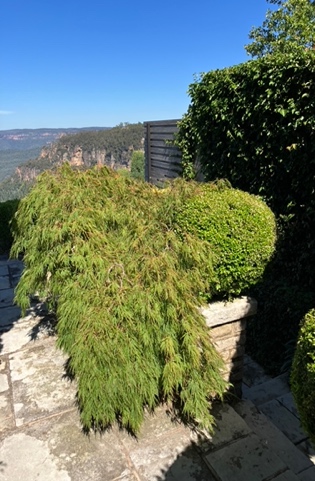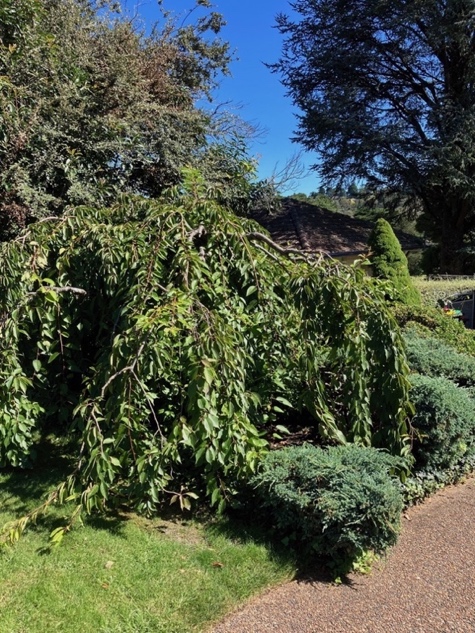Garden Design for Everyone Volume 111
My choice of flowering plants and ornamental trees (evergreen and deciduous)
How I would use them designing a garden for a temperate region within Australia and New Zealand
Synopsis
I want to share with readers my choice of Flowering Plants and Ornamental Trees, how I would use them in when designing a garden in temperate regions.
So why have I written Volume 111

MY third book allows an expansion of my ideas from Volume 1, and 11 (Ideas and thoughts I express from a personal perspective) over the last 45 years working in garden design.
So for a moment I want to reflect on my last two volume’s.
Volume 1, was published in 2005. A pictorial garden design book
Basically a book of notes I used when teaching and designing students garden’s during the early 1990’s.
Volume 11, was published in 2024 I focused on how lifestyles had changed over past 20 years and how it has affected suburban blocks.
I wrote too of the natural world particularly with climate change, with its effect on surburban gardens, with new housing suburbs leaving such a small space for a garden. I too discussed composting and mulching.
I emphasise a garden it’s not just a collection of plants. I wrote of: How simple design features can create an interesting concept.
In my latest book I select a varied range of flowering plants to share with readers, my chose of plants that not only provide your garden’s decoration but will bring bird life and an array of insects into the garden, to assist with cross pollination.
An ornamental bridge along a pathway with a ‘dip in the ground’ is a way to create interest taking visitors from one area to another.

The Bridge
In my garden I’ve created an interesting area’ by adding a pathway with pine bark threading its way through a shady fern garden.

Pine Bark
I begin with a little historical journey
Without doubt it’s the suburban garden that is the most important garden that has been developed, since the Roman era and through to industrial Revolution to the 17th-20th century.
Tools haven’t changed much since Roman period. The Romans occupied Britain 43 AD to 410 AD, and were responsible for the emergence of the small suburban gardens around their villas. This happened gradually over the 400 years as the Romans settled into villages and towns across Britain.
Through the ages garden hand tools haven’t changed much at all.

Garden Tools
Middle Ages Britain Earth went through severe “Climatic Activity”
The earth’s climatic activity proved catastrophic with the advent of the Little Ice Age throughout the Northern Hemisphere during 900-1200AD, it bought severe cold weather into Britain and Northern Europe it did also cause a great population shift from the land creating larger populations throughout the small villages and towns.
Before and during 1st world war, many country villages; local councils saved arable and divided it up into
individual plots for home-owners or renters to have their own vegetable plots.
1950’s to 1960’s A personal reflection
I do remember growing up in a country village in England during the 1950’s the air was full of coal smoke at certain times of the year. Our vegetable garden my father tendered to, was full of cabbages, sprouts, lettuce, climbing beans; however the air during the colder months of the year was full of coal smoke.
Vegetable and flower plots
These plots became the essence of vegetable and flower growing in Britain around the world before and after the 1st and 2nd World Wars
Across Britain, before the 1st and 2nd world wars suburban homes had small ‘back to back’ suburban gardens that were enclosed, many still exist today and all over European and towns and villages.
The 20th century suburban garden, “a high percentage of home ownership”.
This era had a high percentage of home ownership, a great deal of undeveloped land on outskirts of towns and cities, is being built on and released for private housing.
The suburban garden, is undergoing dramatic change, taking on many shapes and sizes, many elements of design depend on:
1. How big the home is lying on the block of land?
2. How much vacant land there is to create a garden around the home?
For a cold climate garden I share a selection of roses, perennials, and tall evergreens and native trees:
I also share a selection of ornamental trees;
- The deciduous trees I have chosen will provide year-round colour and structure, modest in size and showy in all seasons.
- It’s important to visit a plant nursery in winter to select your bare root trees, however we can purchase semi mature ornamental trees in planter bags all through the year.
- Both Australian native, deciduous or evergreen, trees make up the major garden design.
I suggest when creating a tree a planting scheme (evergreen or deciduous) use in the north and south side of the home.
Garden Trees
I have chosen these deciduous trees to provide assistance to the home owner when considering trees for your garden.
Firstly: Choosing trees for a country garden
Consider:
1. Does it need a windbreak?
2. Do we need an avenue of trees?
3. Where shall we plant our trees for Autumn colour?
Secondly: Trees for the suburban garden
Consider.
1. Its growth rate, and root spread.
2. Habit of the tree’s growth, what shade will it provide?
Through-out the colder regions the maple ‘Acer Palmatum’ a genus of medium to low trees make an ideal garden tree, also ‘Weeping Cherries’, and ‘Betula Alba’.






